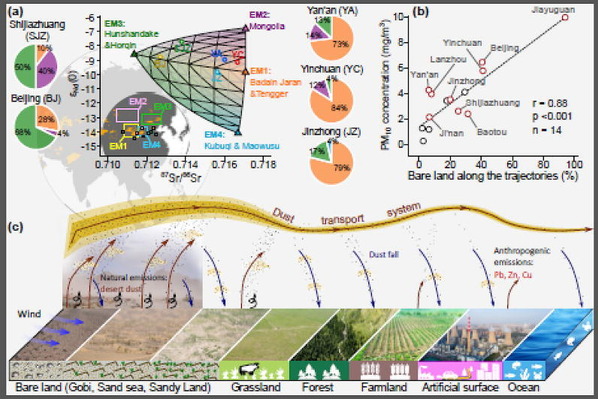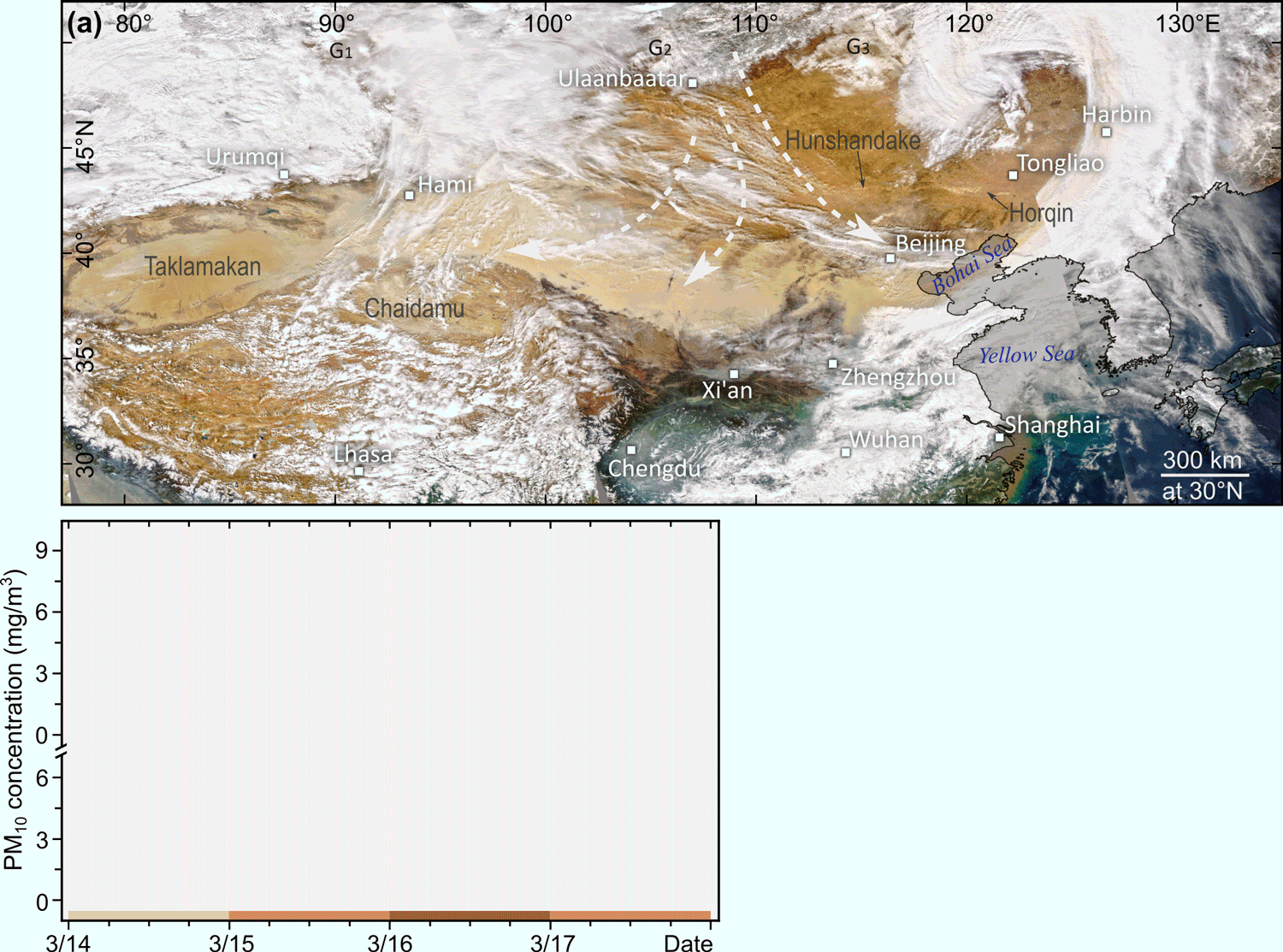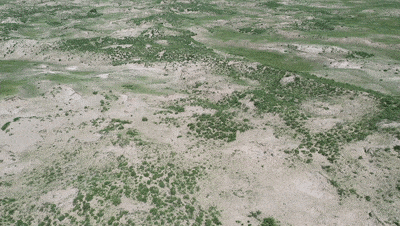Last spring, China and some other Asian countries were plagued several times by dust storms, among which the dust storm that occurred in mid-March was considered to be the worst in the past decade in China. Large-scale dust storms, which have been dormant for years, have undergone a dramatic resurgence, seriously jeopardizing people’s life. What were the initial sources of the dust? How were its transport pathways? What kind of mechanism did trigger the event? All these pertinent scientific questions have captured immense attention.

The research group led by Prof. YANG Xiaoping at the School of Earth Sciences, Zhejiang University has been making efforts to study the desert system and its environmental impacts with a special attention to dust storms. They tried to study the dust transport processes in full blow through systematically collecting samples from different sites across northern China while the last mid-March dust storm, i.e., “3.15” dust storm, happened.
When the dust storm occurred, dust falling in different sites spanning more than 1,600 kilometers from Jiayuguan in the west to Jinan in the east became the subject matter in their research. “This systematic sampling strategy, combined with high temporal resolution remote sensing data, real-time metrological data, and geochemical analysis of the dust samples, enables us to explore the dust transport processes from a multidisciplinary perspective,” said Prof. Yang.
Their findings appeared in the journal Science Bulletin. This timely study provides direct evidence that dust transport is a complex and exchangeable open system from sources to sinks.
On the day after the dust storm, an internationally renowned scientific institution claimed in an online briefing that it originated from the Taklamakan Desert in western China and spread throughout East Asia thereafter. However, on the strength of their previous experience, Prof. Yang et al. felt that this view was off the mark. Their further research came to the conclusion that this unusual dust storm spread from central Mongolia to northern China spokewise.

The origin and real-time transport pathways of the 2021 mega dust storm
To quantitatively assess the contributions of different potential source areas to this dust fall, the ZJU researchers studied the Sr-Nd isotopic compositions of these highly mixed and tiny dust particles of silicates. They discovered that most samples could not be explained by sources only in China; instead, fine sediments originating from Mongolia contributed a considerable amount of material to the milky dust clouds over East Asia. Surprisingly, the “well-established” culprits of every dust storm event—the Kubuqi Desert and the Maowusu Sandy Land—contributed a negligible amount to the dust.

MODIS images showing that the areas affected by the 2021 mega dust storm (a), time series of PM10 concentrations (f) and the vertical dust distribution revealed by CALIPSO data (g)
“A multiple lines of evidence, including Cloud Aerosol Lidar Infrared Pathfinder Satellite Observation data and geochemical modeling, prove that dust emissions from the Kubuqi Desert and the Maowusu Sandy Land have been effectively suppressed thanks to the endeavor of China’s national ecological restoration program in the past several decades”, said Prof. Yang.

The video showing that the vegetation coverage of the Hulunbuir Sandy Land has increased significantly since the implementation of the national policy of converting grazing land to grassland
“Deserts are the products of the interactions among different components in the Earth system, such as lithosphere, pedosphere, atmosphere, biosphere, and hydrosphere. Research on deserts and dust storms is not only pivotal to understanding the process and mechanism of climate change but also fundamental to providing scientific support for preventing and controlling desertification as well as improving the ecological environment”, commented Prof. Yang.
In the past few years, Prof. Yang and his team have established a relatively complete geochemical database of surface sediments from Chinese deserts. Like a gene pool, this provides crucial references for dust source studies.
Among the many samples collected, one sample from Baotou in Inner Mongolia is exceedingly special.
The researchers found that trace element patterns of all dust samples were quite consistent, except for the three-fold enrichment of light rare earth elements (REEs) in the Baotou sample. Baotou is crowned as the capital of REEs in China. They further discovered that the daily dust samples in Baotou have significantly higher (5-10 times) light REEs. The intermediate REEs concentration in the dust over Baotou demonstrated that the extremely high anomalies of light REEs were considerably diluted by external sources during the mega dust storm.

Upper continent crust-normalized trace element patterns and particle size distributions of the samples collected from different sites during the 2021 mega dust storm
“It is this unique enrichment of light REEs in Baotou that inspired us to calculate the contributions of local and external sources based on the binary mixing modeling using the bootstrap method”, said Prof. Yang.
These findings are exceptionally valuable. “This is the fascination of the sciences of Quaternary geology and physical geography. One can use different lines of evidence to corroborate each other and clear up the same ‘mystery’ in the nature”, Prof. Yang added.
Figures and video supplied courtesy of the group led by Prof. YANG Xiaoping
(From ZJU NEWSROOM)

